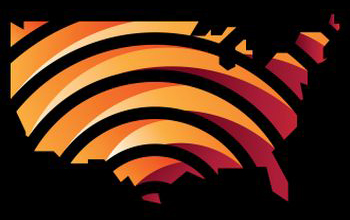News Release 18-025
Powering advances in wireless connectivity for the future
NSF joins leading networking companies and associations to support wireless research platforms in Salt Lake City and New York City

PAWR is overseeing city-scale testing platforms for advanced wireless research.
April 9, 2018
This material is available primarily for archival purposes. Telephone numbers or other contact information may be out of date; please see current contact information at media contacts.
The National Science Foundation (NSF) announces an important milestone in its Platforms for Advanced Wireless Research (PAWR) effort. In collaboration with an industry consortium of 28 networking companies and associations, NSF is supporting the development and deployment of the first two PAWR research platforms, based in Salt Lake City and New York City. These platforms will power research motivated by real-world challenges on experimental, next generation wireless test beds at the scale of cities and communities. The goal is to advance the state of the art for wireless technology beyond today's 4G, LTE and emerging 5G capabilities.
"The platforms announced today will enable cutting-edge research in living laboratories across the country, which is a new and important milestone for advancing wireless capabilities," said Jim Kurose, head of the Computer and Information Science and Engineering directorate at NSF. "Innovative wireless networks, technology and applications are key to achieving the vision of future, smart communities."
The PAWR platforms will enable early-stage research that will push forward robust, new wireless devices, techniques, protocols and services. In addition, these research platforms will allow promising technologies to move quickly to market, provide hands-on practical training to a new generation of students, increase job opportunities, and support overall U.S. economic vitality. The overarching goal is to revolutionize the wireless ecosystem and maintain U.S. leadership in the sector for decades to come.
The design, development, deployment and initial operations of the two research platforms will be overseen by the PAWR Project Office (PPO), which was funded by NSF last year and is run through US Ignite, Inc., and Northeastern University. The PPO works closely with NSF and the PAWR Industry Consortium to manage this $100 million public-private partnership. NSF has committed $50 million toward the research platforms over the next seven years, and expects to announce the development and deployment of additional platforms next year. The PAWR Industry Consortium, consisting of equipment vendors, device manufacturers and wireless carriers, has committed $50 million in cash and in-kind contributions that include equipment, expertise and human resources.
NSF's investment in the PAWR program is part of a broader strategy to support smart cities and communities. These research platforms will help to shape the future of wireless networks that will serve as the foundation for critical applications and services in our nation's neighborhoods and municipalities.
Benefits from this research may include:
- Enabling first responders and surgeons to share real-time data during emergencies.
- Training entry-level workers via immersive, virtual reality systems.
- Providing seamless communication between vehicles and roadway infrastructure to reduce traffic congestion.
Below are descriptions for the two research platforms announced today, along with the participating institutions.
POWDER-RENEW: A Platform for Open Wireless Data-driven Experimental Research with Massive MIMO Capabilities, University of Utah and Rice University.
POWDER-RENEW, a collaboration with municipal and state leadership from Salt Lake City and Utah, will create an advanced wireless research platform that will cover 2.3 square miles of the University of Utah campus, 1.2 square miles of downtown Salt Lake City and a two-mile corridor in between, reaching a potential population of 40,000 people. While it will enable wireless research across many technical areas, the research platform will offer unique and specialized capabilities for dynamic spectrum sharing and advanced wireless antenna technologies.
COSMOS: Cloud Enhanced Open Software Defined Mobile Wireless Testbed for City-Scale Deployment, Rutgers University, Columbia University, and New York University.
COSMOS is partnering with New York City, Silicon Harlem, City College of New York, University of Arizona and IBM, to bring this advanced wireless test bed to life in New York City. The test bed will cover 1 square mile in a vibrant, densely-populated neighborhood in West Harlem. The technical focus of the COSMOS platform is on ultra-high-bandwidth and low-latency wireless communications, with tightly coupled edge computing, a type of cloud computing enabling data processing at the edge of the network. COSMOS will pursue millimeter-wave radio communications and dynamic optical switching technologies. This new wireless research platform will allow for experimentation at a scale that could not be achieved previously, thereby enabling new services and applications to benefit the entire community.
-NSF-
-
POWDER-RENEW located in Salt Lake City.
Credit and Larger Version -
COSMOS to bring an advanced wireless test bed to life in New York City's West Harlem.
Credit and Larger Version
Media Contacts
Linda A. McBrearty, NSF, (703) 292-2251, email: lmcbrear@nsf.gov
Program Contacts
Thyaga Nandagopal, NSF, (703) 292-8910, email: tnandago@nsf.gov
Related Websites
POWDER-RENEW: https://powderwireless.net/
COSMOS: http://cosmos-lab.org/
The U.S. National Science Foundation propels the nation forward by advancing fundamental research in all fields of science and engineering. NSF supports research and people by providing facilities, instruments and funding to support their ingenuity and sustain the U.S. as a global leader in research and innovation. With a fiscal year 2023 budget of $9.5 billion, NSF funds reach all 50 states through grants to nearly 2,000 colleges, universities and institutions. Each year, NSF receives more than 40,000 competitive proposals and makes about 11,000 new awards. Those awards include support for cooperative research with industry, Arctic and Antarctic research and operations, and U.S. participation in international scientific efforts.
Connect with us online
NSF website: nsf.gov
NSF News: nsf.gov/news
For News Media: nsf.gov/news/newsroom
Statistics: nsf.gov/statistics/
Awards database: nsf.gov/awardsearch/
Follow us on social
Twitter: twitter.com/NSF
Facebook: facebook.com/US.NSF
Instagram: instagram.com/nsfgov


